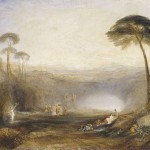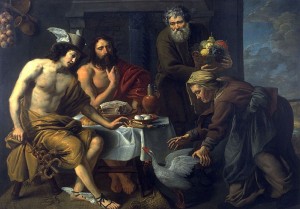A guest post by An Elder Apprentice
This post originated as a comment to Yvonne Aburrow’s post on Pagan Leadership. Yvonne began that post with the following questions, “Does the Pagan movement have leaders? Do we need them? What is a good model of leadership?”

There are so many types of leadership manifest in any religious culture. Perhaps identifying and acknowledging the importance of the many categories of Pagan leadership will allow for an appropriate expansion in the definition of leadership and thus allow for a move toward an appropriate division of labor and acknowledgment of each participant’s leadership in their own sphere of excellence? Of course while one person can excel in multiple areas of leadership, identifying the ‘best person for the particular job’, may help resolve the on-going predicaments with Pagan leadership. Below are some of the varieties of leader that I have identified in the Pagan world in my two years as an elder apprentice.
The visionary pathfinder and guide – This person blazes the trail through an unexplored territory and can talk about it coherently and with such passion that others want to follow and perhaps more importantly others are enabled to follow that path. After all every tradition was started by one or a very small group of such people. With respect to Wicca, Doreen Valiente and Gerald Gardner are such visionary pathfinders. However, each coven, grove, or whatever was similarly founded by one or small group of people with a vision and desire to share it. This role continues to be critical in any viable tradition, and in each group, as guides on the way forward always are required if a tradition or group is to live and grow.
The Executive Organizer – This is the role most people envision when they hear the word, ‘leader’. Regardless of a group’s governance, e.g. consensus, democratic, a military or Catholic hierarchy, or whatever, these people enable the group to become and stay organized. In any group the buck must stop somewhere or the group can chase its own tail forever. This may role may be performed by one person or by a process, but it must happen somehow. I personally believe Selena Fox is an exemplar in the Pagan community of this quality of executive leadership.
The Patron – A patron provides resources, typically money, though use of land is a non-monetary example of a patron’s support, required to allow a group to exist and move forward. The skillful patron understands that while others may perform the more visible leadership roles, they are also leaders as their choice of where to place their resources or not will change the direction of any organization, even if they defer to others in terms of the more tangible areas of leadership. Knowing how to invest resources well and to invest those resources in ways that empower others to achieve maximum benefit is itself an important leadership quality. Yvonne’s post showed a picture of Moina Mathers. According to the book Women of the Golden Dawn, she and the entire Golden Dawn organization were supported by funds given by Annie Horniman, a wealthy heiress.
The Priest/ess – The Priestess leads in the spiritual and magical activities of a group. Not everybody has such priestessing skills and among its other qualities, when skilfully performed, the priestly role frees others to get the benefit of entering the land of the spirit together. Moina Mathers is certainly a fine example of a priestess as leader. However, from reading Women of the Golden Dawn, it appears she may have been sorely lacking in other dimensions of leadership.
The Teacher – A teacher passes on tradition and skills required to be part of a tradition. This person is perhaps is an exemplar of the practice, someone who others emulate even if the teaching role is informal or even unacknowledged. If the teacher truly has teaching skill they know how to make it easy to emulate what they hold. The ability to teach successfully is a rare and difficult skill; ask anyone who has ever worked, successfully or not, as a schoolteacher knows how hard that job is. Perhaps in the larger Pagan community most of the “Big Name Pagans” (in my personal view, the better ones) are primarily teachers as their writings and classes serve as the exemplars of practice that others want to and often can emulate.
I am sure that others can identify other leadership roles that are required to make their groups succeed and their traditions vibrant. However it is clear that the Pagan movement has leaders, requires leadership, and the models of leadership are as varied as Paganism itself.
_________________
An Elder Apprentice was gifted with an unexpected call to study Anderson Feri one week after his sixtieth birthday; taking up the offer, he has been a dedicated student for over two years. He lives in a suburb of a large Midwestern city with his wife and a small white cockatiel.












